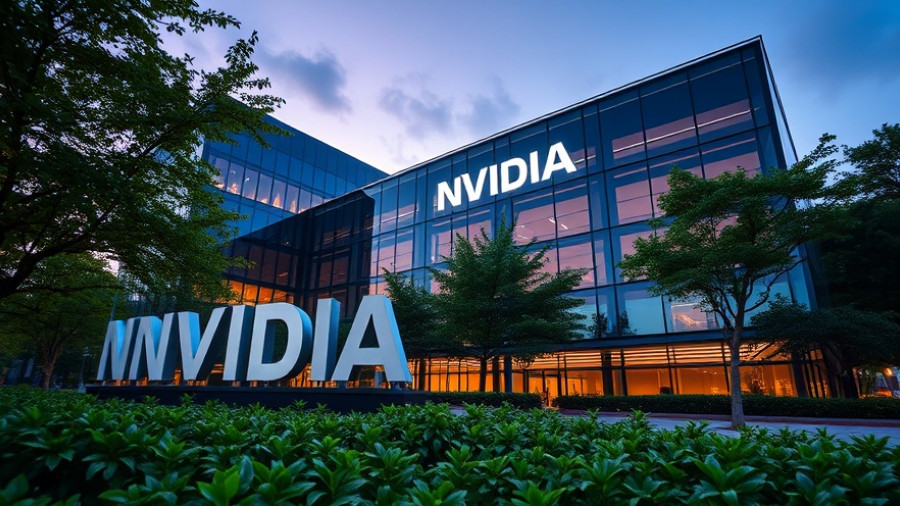
Understanding Nvidia's Strategic Position
Nvidia's latest architecture, Blackwell, launched in 2024, isn't just another product release; it's a strategically timed advancement that signifies a new chapter in AI-driven technology. Historically, Nvidia has maintained its leadership in the graphics processing unit (GPU) sector while simultaneously expanding into the artificial intelligence (AI) market. This dual focus has positioned the company to leverage the increasing demand for AI capabilities, creating a powerful pivot towards potential sustained revenue growth.
The Historical Context of Innovation
Looking at Nvidia's past, it's evident that each major product launch has marked a significant turning point. Following the release of the Ampere platform in 2020, Nvidia experienced a staggering 120% stock increase over two years. Similarly, the Hopper architecture led to an astronomical 700% surge. Understanding this historical performance offers valuable insights into the future trajectory of Nvidia's stock performance post-Blackwell launch and showcases the company’s trend of significant market response to new innovations.
Projected Revenue Growth and Market Dynamics
According to analysts, Nvidia's immediate future looks promising, with expectations of continued double-digit revenue growth driven by the Blackwell architecture. This expectation stems from not only the architecture's capabilities—like 30x performance improvements over previous models—but also the rising tide of AI adoption across various sectors. As companies invest heavily in AI to stay competitive, their reliance on products like Nvidia's Blackwell underscores a clear path toward revenue increase.
Market Reactions and Investor Sentiment
The initial surge of Nvidia's stock by approximately 40% following the Blackwell launch reflects historical patterns observed with previous architectures. Investor sentiment is starting to shift from heightened enthusiasm to a more cautious optimism, especially considering the reduced growth forecasts. As investor focus transitions from speculation to practical applications, Nvidia's ability to meet real-world needs will be critical in reinforcing its market dominance.
The Competitive Landscape Ahead
What's particularly interesting is the competitive aspect of Nvidia's market position within the AI sector. With competitors like AMD and Intel refining their AI offerings, Nvidia's window of opportunity will depend largely on their ability to stay ahead in performance and innovation. Furthermore, strategic partnerships with cloud providers enhance Nvidia's position, countering potential risks from market concentration, where a few players dominate the revenue landscape.
Adapting to the Future of AI
The landscape of AI technology is characterized by rapid innovation and evolving demands. Nvidia’s commitment to annual updates, with the Vera Rubin system slated for release in late 2026, speaks to its long-term strategy in retaining relevance and leadership. As AI continues to evolve, Nvidia’s ongoing adjustments to meet industry demands will be pivotal in determining its sustained growth.
Closing Thoughts: A Balanced Perspective
As Nvidia navigates the post-Blackwell landscape, it is essential for investors to balance their optimism with caution. While the potential for significant stock growth exists, various external factors—such as global economic fluctuations and the tech market's overall health—could influence outcomes. The historical performance of Nvidia suggests positive trajectories, yet the path to sustained growth in a rapidly changing environment will require vigilance and adaptability.
 Add Row
Add Row  Add
Add 




Write A Comment